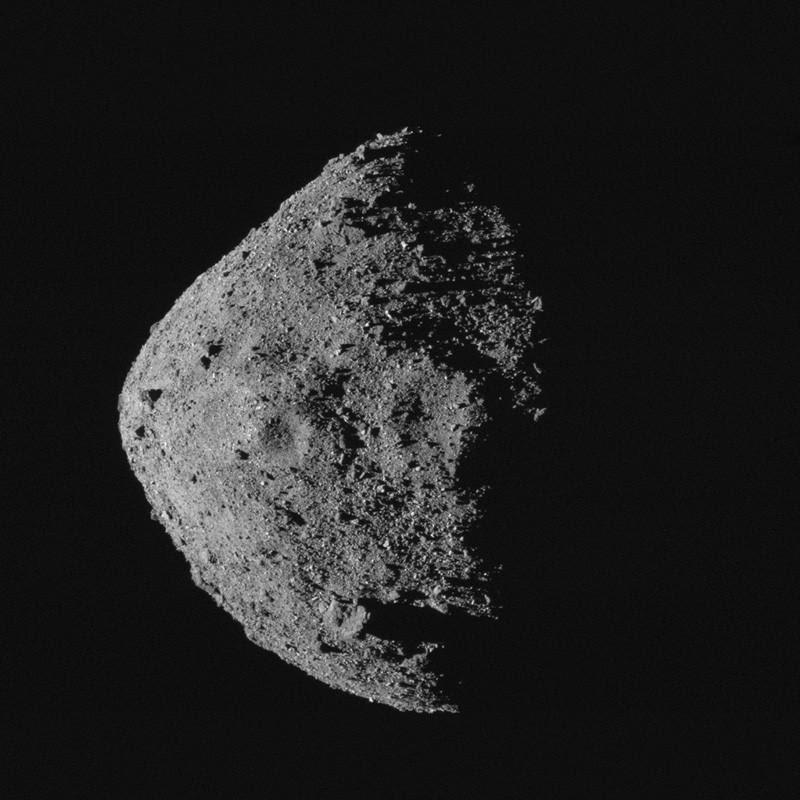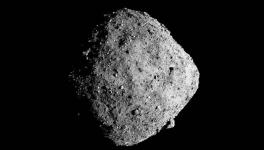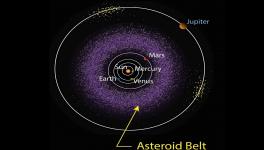NASA’s Latest Asteroid Mission: Importance of Collecting Sample from Bennu and Expected Outcome

Image Courtesy: NASA/University of Arizona.
Bennu is an asteroid orbiting in a not-so-far space from Earth. Bennu’s existence came to be found in 1999 when it was discovered by a team of the NASA-funded Lincoln Near-Earth Asteroid Research project.
Now, NASA’s asteroid mission has successfully landed its spacecraft on the surface of Bennu on October 20. The OSIRIS-REx spacecraft of the mission briefly touched the surface of the asteroid orbiting at about 334 million kilometres from Earth. The aim is to collect dust and pebbles from the surface and NASA is expecting to know whether its spacecraft has successfully collected samples within a week. If successful, then the samples would be brought back to earth for further studies of the history of our solar system.
The asteroid mission was launched in 2016 and accomplished the landing amid a thorny journey. In the beginning, the team had expected it to be a smooth landing on the 500-metre-wide asteroid. But when ORISIS-REx reached near the surface Bennu and started orbiting it, it was found that Bennu’s surface has dangerous boulders. Named ‘Mount Doom’, the boulder that hindered the spacecraft’s landing is equal to the height of a two-storey building. However, the mission engineer was able to fix the problem by developing an automated system that guided the spacecraft. The automated system collects images with the spacecraft descent and compared them with the previously collected images, analysing whether it is safe to land. If not, the spacecraft would be automatically flying away from the asteroid and wait for a second landing chance. Finally, it could make the landing at the target site named ‘Nightingale’, which is a 16-metre-wide crater.
Dante Lauretta, the principal investigator of the mission and a planetary scientist at Arizona University said, “We did it — we tagged the surface of the asteroid. The spacecraft appears to have operated flawlessly. I hope the world looks at this as a piece of good news — something we can be proud of with all the insanity that’s going on this year.”
OSIRIS-REx while descending towards Nightingale had its robotic arm open which is about 3.3 metre in length. Right after touching the surface of Bennu, the spacecraft released a puff of nitrogen gas to kick up small grains out of asteroid debris. A connected device could pump some of the particles and store in the storage chamber. Soon after sucking up materials from the asteroid surface, the spacecraft flew away to a safer distance and now scientists are assessing how much material it could extract.
According to Lauretta, the team wants a 60 grams sample containing the dust and pebbles from the asteroid surface. If the sample weighs below, say 40 grams, then the team would likely to try for a second landing but at a different location than the Nightingale, named the Osprey. “It cannot go in to sample Nightingale for a second time, because the original nitrogen puff will have pushed small rocks on the surface to uncertain locations, making a ‘double dip’ hazardous”—said Lauretta to Nature.
THE PURPOSE OF THE ASTEROID MISSION
Asteroids are born as a result of a break away events from a larger parent body, which happen during cosmic collisions in the asteroid belt of the solar system. The materials present in an asteroid can contain signature of its parent body, and studying them can reveal the still unknown facts about our solar system.
Bennu also has some such signatures that its parent body contained. OSIRIS-REx while orbiting Bennu detected that some of the boulders present there contained veins of a carbon rich material called the carbonate. One possibility of the presence of carbonate is that it formed as a result of ice melting and trickled through the parent body. The veins measured centimetres to more than a meter. The veins in the boulders of Bennu also suggest that the parent body from which Bennu broke away, could once have hot water flowing through it.
The samples collected from Bennu’s surface is making the scientists excited as this asteroid might contain carbon rich material, meaning organic compounds that are prevalent in the solar system including our own Earth.
Each asteroid has its own journey and own story to tell about its evolution over time. Collecting a sample directly from such an asteroid offers a unique glimpse at the rocks and dust that were left over during the solar system formation some 4.5 billion years back. Bennu is also expected to offer such glimpses.
Scientists are planning to compare the sample with those collected from the Hayabusa mission of Japan that collected sample from the asteroid Ryugu. Bennu’s sample is expected to reach earth by 2023.
A GLIMPSE AT THE HISTORY OF ASTEROID MISSIONS
Although, human exploration into the space has a robust history of about half a century, asteroid missions are relatively newer. The first landing was way back in 2001 when NASA mission named ‘NEAR Shoemaker’ landed in the near-earth asteroid Eros. It was basically designed as an orbiter but improvised to make a landing and could transmit from the asteroid for 16 days.
Then comes the Hayabusa mission led by Japan to sample the asteroid Itokawa. The landing was in the year 2005. Japan got another asteroid mission, the Hayabusa 2 mission to sample asteroid Ryugu and could return sample from it. Then comes the OSIRIS-REx mission of NASA to sample Bennu.
Get the latest reports & analysis with people's perspective on Protests, movements & deep analytical videos, discussions of the current affairs in your Telegram app. Subscribe to NewsClick's Telegram channel & get Real-Time updates on stories, as they get published on our website.
















